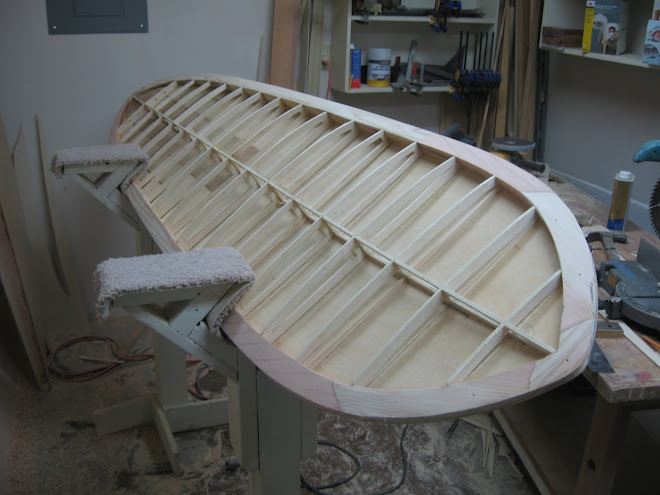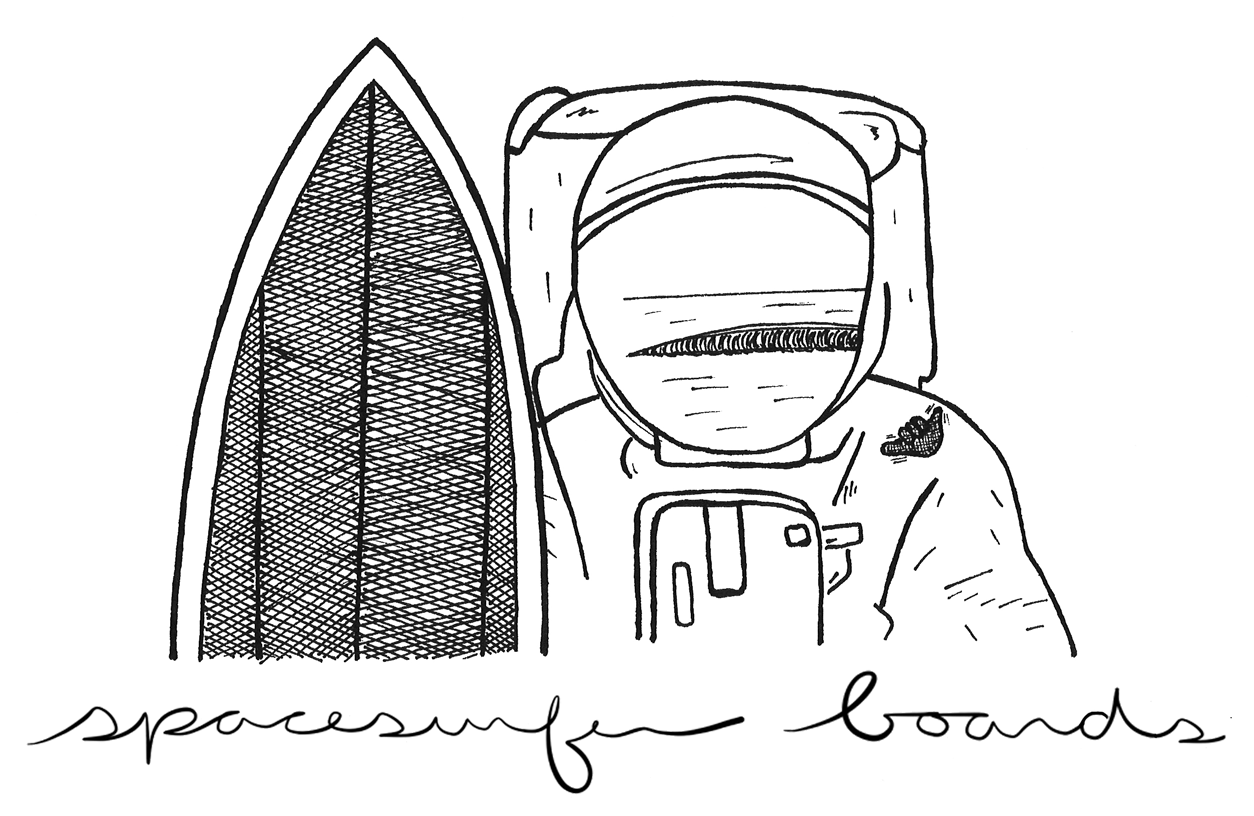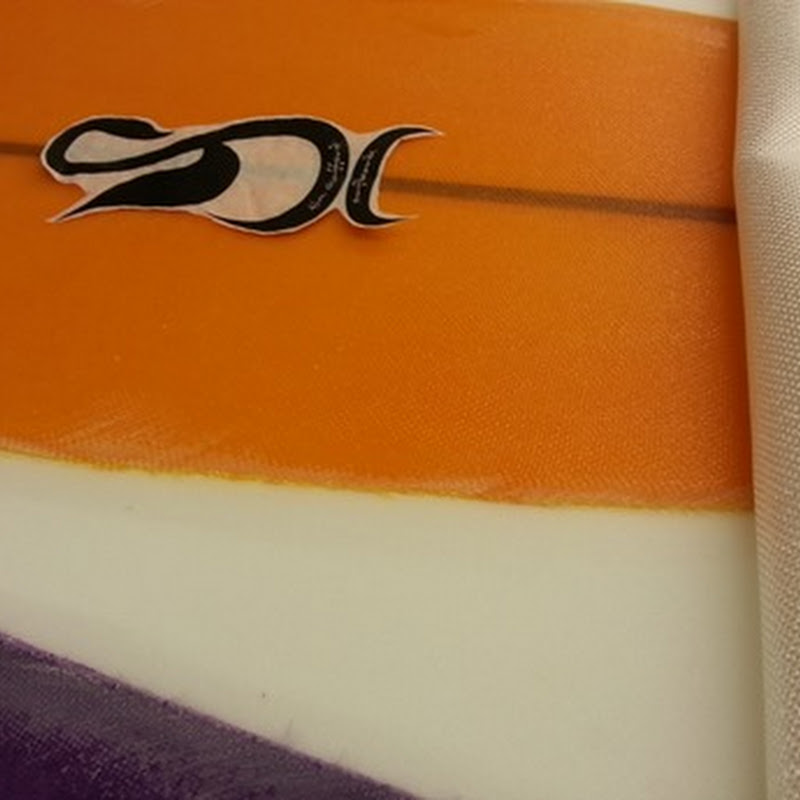 This board was a result of several factors and influences
This board was a result of several factors and influences
I wanted a board small enough to fit in the back seat of the car, but still offer the float / paddling of a longer board (like "trunk boards", but not quite as small)
I wanted to use the square tail / square nose to give it a straighter rail curve than most small wide boards, something I had also seen on the "trunk boards".
I had seen several step-decks on swaylocks, with good ride-report, and figured my rail system lent itself especially well to a step-deck.
I was curious about challenging certain assumptions, wanting to build a board with no ribs - and diverging from the common practise of running the planks lengthwise or diagonally.
Another factor was that I had read several forum posts of builders fighting to bend the deck into the compound curves that rocker / dome created on top. So I decided to design a board that has no bent pieces of wood in it, at all. This was a result of a discussion I started on tree-2-sea concerning my desire to build a wood board that capitalized on wood's strengths, without fighting to make it imitate foam in shape or structure.
I always build my decks piece by piece over the framework, so I seldom have to struggle to bend it the way others do. But in this case, the entire board was to be built of straight pieces of wood.


































.jpg)












Hi mate, how did you learn the process of making these boards? Do you know of anyone doing classes in Aus? I've built an alaia, now looking to step up to a hollow.
ReplyDeleteThanks,
Ben